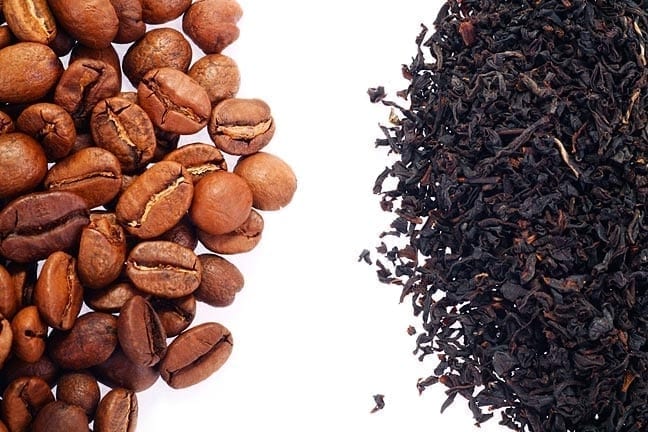If you are currently following a ketogenic diet, also called keto, then you have probably…

The Third Wave Myth: Inside a Marxist Takedown of High-End Coffee’s Value Structure
An enduring myth within the Third Wave coffee movement is that price based on some objective measure quality has the ability to create sustainable supply chains in which equity is shared throughout.
While this may hold true in isolated cases, the real value addition for Third Wave, high-quality coffees has been devised by and remains controlled by actors in the global North, a reality that perpetuates classic dependency patterns in the coffee trade that disadvantage smallholder producers.
Such is an over-simplified summary of an argument put forth last year — and reminded to Daily Coffee News by a recent Twitter chain — from Edward F. (Ted) Fischer, a longtime anthropological scholar and director for the Center for Latin American Studies at Vanderbilt University.
Fischer’s paper, “Quality and Inequality: Taste, Value, and Power in the Third Wave Coffee Market” is a profoundly thoughtful, well-researched takedown of some of the Third Wave movement’s prevailing pillars of thought. If nothing else, it should inspire deep self-reflection for any specialty coffee professional, while reminding us all that we are merely numbers in a trading system that continues to exploit the most vulnerable actors in the supply chain, despite the persistent, hard-blown trumpeting in the global North of corporate sustainability efforts.
The paper is grounded in Marxist economic theory on commodities, particularly involving “use-value” (an object’s fundamental material utility) and “exchange value” (what people are willing to pay for it once it is marketed). In the excerpts below, there are also repeated references to “material production” and “symbolic production.” Again, to over-simplify, we might consider material production the actual production of a good (in this case, coffee produced by a farmer), whereas symbolic production involves social and cultural values (in this case, production by the coffee roaster/retailer).
We recommend reading the paper in full, though here we have extracted some of its most compelling passages:
On material production vs. symbolic production
In the case of coffee, smallholding farmers control terroir in the gritty materiality of dirt and land, and thus the ability to produce a certain quality, but the real economic power lies with those who define quality, the coffee aficionados and Third Wave marketeers who orchestrate the symbolic and social means of producing what Jens Beckert (2016) terms “imaginative value.” With tastemakers in the Global North constantly chasing new and ever more exotic flavors, farmers in tropical coffee growing regions of the world find themselves at an impossible disadvantage in making decisions for planting and harvests four to five years down the road. Under these conditions, the one who controls the means of symbolic production is able to extract the most surplus material value.
On who determines quality
Experts emphasize that quality is strictly about what is “in the cup” – they say that hype and PR does not matter in a blind cupping because the quality is either there or not. All very upfront and meritocratic, it would seem. But who adjudicates that quality? The coffee world’s notion of “quality” strives for solidity and objectivity, with tasting certifications, multi-judge panels, and other metrics imbued with a pseudo-scientific legitimacy. A key function of this elaborate apparatus is to obscure that it is a social artifice, a shared aesthetic valuation regime shot through with economic interest and power relations.
On the myth of blind cupping scores
The data show that the farm gate price depends more on the size of the farm and the social capital of the farmer than on blind cupping scores. In this market, the real economic power rests with the ability to define the terms of symbolic value and to translate those symbolic values across the commodity chain.
On consumer perception
For many Third Wave coffee consumers, they are not only drinking a quality cup of coffee, but also buying into (in their own idiosyncratic ways) a vague ethic of artisanal quality and authenticity and a connection to a distant Other.
On market leadership
The means of symbolic production are more ephemeral and elusive, dealing with imaginative rather than material potential. They involve trend-setters, cool-hunters, thought-leaders, media conglomerates, maverick bloggers, social networks, the idiosyncratic improvisation of daily life, the serendipity of encounters with people and ideas, and the viscous structures that channel our desires.
On quality vs. ethics
The Third Wave concern with “quality in the cup” overshadows appeals to social justice in the conditions of production. This is a post-justice infatuation with artisanry and authenticity that simply assumes that such expensive coffee will be produced in ethical conditions.
On producers capitalizing on the high-end market
For the big winners, success comes not just from microclimate and harvesting techniques, but in their store of social and cultural capital that allows them to bridge domains of value to facilitate economic arbitrage. The real power still rests in the Global North, with roasters and retailers educating consumers about coffee quality and managing the symbolic capital in a way that pushes risks back onto producers (even of quality coffee) and making them vulnerable to fickle taste and trends.
On Third Wave language and conspicuous consumption
Objective quality (by established tasting standards and conventions) and market scarcity play an important role, but just as important, and probably more, are the symbolic values at play: the relative positioning of conspicuous consumption; the imagined, personal relationship with a producer; and underwriting it all, the cultural and market shift among the global affluent toward artisanal and singular products. The language used to talk about Third Wave coffee borrows heavily from fine wine, ideas of terroir, and the artisanal food movement. The narratives about provenance and taste are key to its value.
On different vs. better
For virtually all who try them, it is clear that micro-lot Third Wave coffees are different from run-of-the-mill joe. A whole range of subtle flavors comes out in the clean, smooth, balanced profile of a fine coffee. There is an objective, material distinction: they simply taste different. But how does different become “better”? The values and labels we assign to tastes are learned. They become codified among a cognoscenti, and then, to the extent that they become stylish, are learned by others. At the very least, a common vocabulary gets established, one permeated with class and cultural associations.
More on different vs. better
The SCAA, CoE, and others pioneering the Third Wave coffee market have made a concerted effort to establish new taste criteria and to ground those value judgments in objective, scientific measurements. This is the way that the means of symbolic production can work to make “different” into “better”: employing science (agronomy, geography, climatology) to create categories of “objective” differences, upon which are built the pseudo-objective cupping profiles, and values are assigned to these profiles on a scale that corresponds to price.
On the role of retail
It is here (in the coffee shops and online stores) that the means of symbolic production are deployed, with particular attributes highlighted and communicated. While there are a growing number of serious coffee aficionados, they still only constitute a fraction of a typical shop’s business. So Third Wave retailers have to educate consumers and create demand for a product that has long been priced as a bulk commodity. What kind of value does a $7 cup of coffee bring as opposed to a $1 cup?
On farmers’ understanding of the consumer market
Among farmers in our sample, there was clearly a realization of the importance of “quality,” but for most, quality is predicated on the judgments of intermediaries who assess quality through the cosmetic appearance of cherry or parchment. While there is strong interest in knowing more about the people who drink their coffee, growers’ understandings of Third Wave consumers is vague at best.
On risk to farmers in changing consumer markets
Farmers are seeking to hold on to (and expand) land holdings, while tastemakers and consumers are chasing new and ever more exotic flavors.
On which producers benefit
The biggest beneficiaries of this high-altitude coffee boom have been the middle-sized producers, the smaller of the big producers. These tend to be non-indigenous-owned farms that have been in business for generations and whose owners have inherited and built up the social capital needed to present an attractive image of production and quality to the North American or European market. These farmers tend to be better educated, often with some university education, speak at least a little English, and be early adopters of the internet and cell phones and other technologies of commerce. They grow very high quality coffee, but just as important, they have the social capital that allows them to engage the export market and translate across value regimes.
On the neo-dependency economy
…We find a neo-dependency global economy, with production taking place in the periphery and consumption in the core. At the same time, high-end markets are chasing authenticity and singularity in a symbolic landscape based on imagined values (and relative positional status). This results in a situation where control over the material means of production is no longer crucial to accumulation. What matters more in this context is control over the channels of distribution and the means of symbolic production.
On the myth of objective quality
We have seen how roasters and coffee shops, the SCAA and its corporate partners, and coffee trendsetters around the world have built a system of coffee metrics and descriptors that anchors valuations and price; how this symbolic valuation machine is deployed alongside the cultural capital provided by narratives of romanticized provenance and self-improvement; and how apparatuses such as the SCAA Flavor Wheel and the accompanying Lexicon go to great lengths to ground their symbolic value creation in metrics. In this way, the means of symbolic production is grounded in seemingly objective criteria.
On shifting market tastes
Roasters are seeking the ever more exotic, as it is oddity and novelty that is most valued. One roaster we interviewed was bubbling with pride as he described a new flavor he had just uncovered in a particular roast (bubblegum!). As I write this, I received a promotional email for a Red Gesha offered by Stumptown with “juicy notes of watermelon and rose water with a hard candy sweetness.” It will be difficult for Maya farmers to keep up with market tastes that shift so quickly, especially when they have to make decisions about what varietals to plants four or five years out.
Nick Brown
Nick Brown is the editor of Daily Coffee News by Roast Magazine. Feedback and story ideas are welcome at [email protected].








